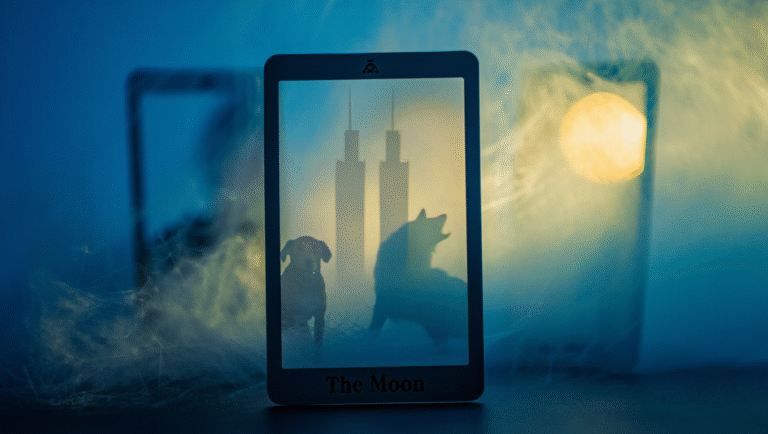My Journey into Tarot Consulting
Tarot cards have always had a certain pull for me—more curiosity than conviction, honestly. I’m a big believer in practical tools that help us gain clarity, not magical thinking. So, when I started using tarot with clients (busy professionals, parents, even a few skeptical engineers), I was as much a student as a guide. In this post, I’ll share how I got started, what worked (and what didn’t), and a straightforward roadmap for anyone curious about integrating tarot into coaching, consulting, or even self-reflection sessions. All in 15-minute, real-world steps.
Why Tarot? (And Why Not Just Talk?)
Let’s get this out of the way: tarot is not fortune telling. At least, not how I use it. Think of it as a tool for structured self-reflection—like journaling with visual prompts, or a really honest mirror. For some clients, the cards help sidestep their inner critic and get to the heart of what’s really on their mind.
“I never thought I’d use tarot in my work life. But my first session helped me untangle a career decision in a way that talking alone never did.”
This was from a client who manages a tech team and is allergic to “woo.” The cards didn’t give him answers—they gave him a new angle on his own questions.
My First Client Session: The Not-So-Magical Beginning
Here’s the honest story. My first tarot session with a client was…awkward. I fumbled the cards, over-explained the symbolism, and worried that I’d seem unprofessional. But something interesting happened: the client (let’s call her Lisa) relaxed. The cards gave us a starting point for a tough conversation about burnout. Lisa didn’t care if I was a tarot expert—she cared that she felt safe exploring her feelings.
Lesson learned: You don’t need to be a tarot “guru.” You just need to create space for inquiry.
How I Set Up a 15-Minute Tarot Consult (For Clients or Yourself)
Here’s my simple process, whether I’m working with someone else or using the cards for my own clarity. It’s doable on a lunch break or before a big meeting.
What You’ll Need
- A tarot deck (see my table below for recommendations)
- Notebook and pen
- Quiet space (yes, even a parked car works)
- Timer (your phone is fine)
Step-by-Step: 15-Minute Tarot Clarity Session
- Set your intention (2 mins): What’s the real question? Not “Will I get the promotion?” but “What do I need to know about this opportunity?” Write it down.
- Shuffle and draw (3 mins): Shuffle the deck while focusing on your question. Draw 1–3 cards (I usually do one for clarity, three for nuance).
- Describe, don’t interpret (5 mins): Look at the images. Say out loud (or write) what you see. Don’t rush to meaning; just notice details.
- Connect to your situation (3 mins): Now, ask: “How does this card relate to my question?” Jot any insights, feelings, or new angles.
- Action step (2 mins): Decide on one small, concrete action inspired by the session. Even if it’s, “I’ll ask my boss for feedback.”
Choosing a Tarot Deck: What Works for Clients
Not all decks are created equal. I’ve tested a dozen with clients; some are too abstract, some too “witchy” for skeptics. Here’s a comparison of my top picks for professional (and beginner-friendly) use:
| Name | Key feature | Size/Material | Price range | Amazon link |
|---|---|---|---|---|
| Rider-Waite Tarot | Classic, easy to learn | Standard cardstock | $15–$20 | Check price on Amazon |
| Modern Witch Tarot | Diverse, modern imagery | Sturdy, matte finish | $20–$25 | See today’s deal |
| Light Seer’s Tarot | Reflective, colorful art | Large, premium cardstock | $22–$30 | Check on Amazon |
| Everyday Tarot Mini | Compact, travel-friendly | Small size, sturdy box | $10–$15 | See price on Amazon |
- Rider-Waite Tarot: Best for beginners or clients who want tradition. Simple, direct images. Downside: Some find it “old-school.”
- Modern Witch Tarot: Great if you want inclusive, fresh visuals. Downside: Slightly bigger cards, which can be tricky for small hands.
- Light Seer’s Tarot: Inspiring and emotional art. Downside: Not everyone clicks with the style.
- Everyday Tarot Mini: Portable, perfect for travel or on-site sessions. Downside: Tiny cards may be hard to shuffle.
What I Learned (The Honest Version)
- Tarot isn’t a magic bullet. Sometimes nothing “clicks.” That’s okay. It’s a prompt, not a prophecy.
- Science and tarot can coexist. I use evidence-based coaching and mindfulness alongside the cards. The combination can be powerful—think of tarot as a creative brainstorming tool.
- Not everyone will be into it. That’s fine. I always ask permission before bringing out a deck, and I keep sessions jargon-free.
Pro tip: If you’re ever in doubt, just say: “This is for self-reflection, not prediction.” Most people relax immediately.
Quick-Start Checklist: Tarot Consulting for Real People
- Choose a deck that feels approachable (see table above)
- Clarify your question—make it open-ended
- Draw 1–3 cards and describe what you see
- Connect the imagery to your situation—no need for fancy interpretations
- Decide on a small action step
- Keep sessions short (15–20 minutes is plenty)
- Always respect personal boundaries and beliefs
Tools & Links
- Rider-Waite Tarot Deck — classic, reliable for all levels
- Modern Witch Tarot Deck — inclusive, modern
- Light Seer’s Tarot Deck — colorful, intuitive
- Labyrinthos: What is Tarot? — clear, science-friendly intro
- Insight Timer — free mindfulness meditation app (great before or after a session)
Final Thoughts: Tarot Without the Hype
You don’t need a velvet cloak (unless you want one, no judgment). All you need is curiosity and a willingness to try something new. Whether you’re a coach, a manager, or just someone who likes creative self-reflection, tarot can be a surprisingly practical tool.
If you try a session, let me know how it goes—or if you have a deck you love, I’m always looking for new favorites.
Some links in this post may be affiliate links. You pay the same price, and this blog may earn a small commission.



